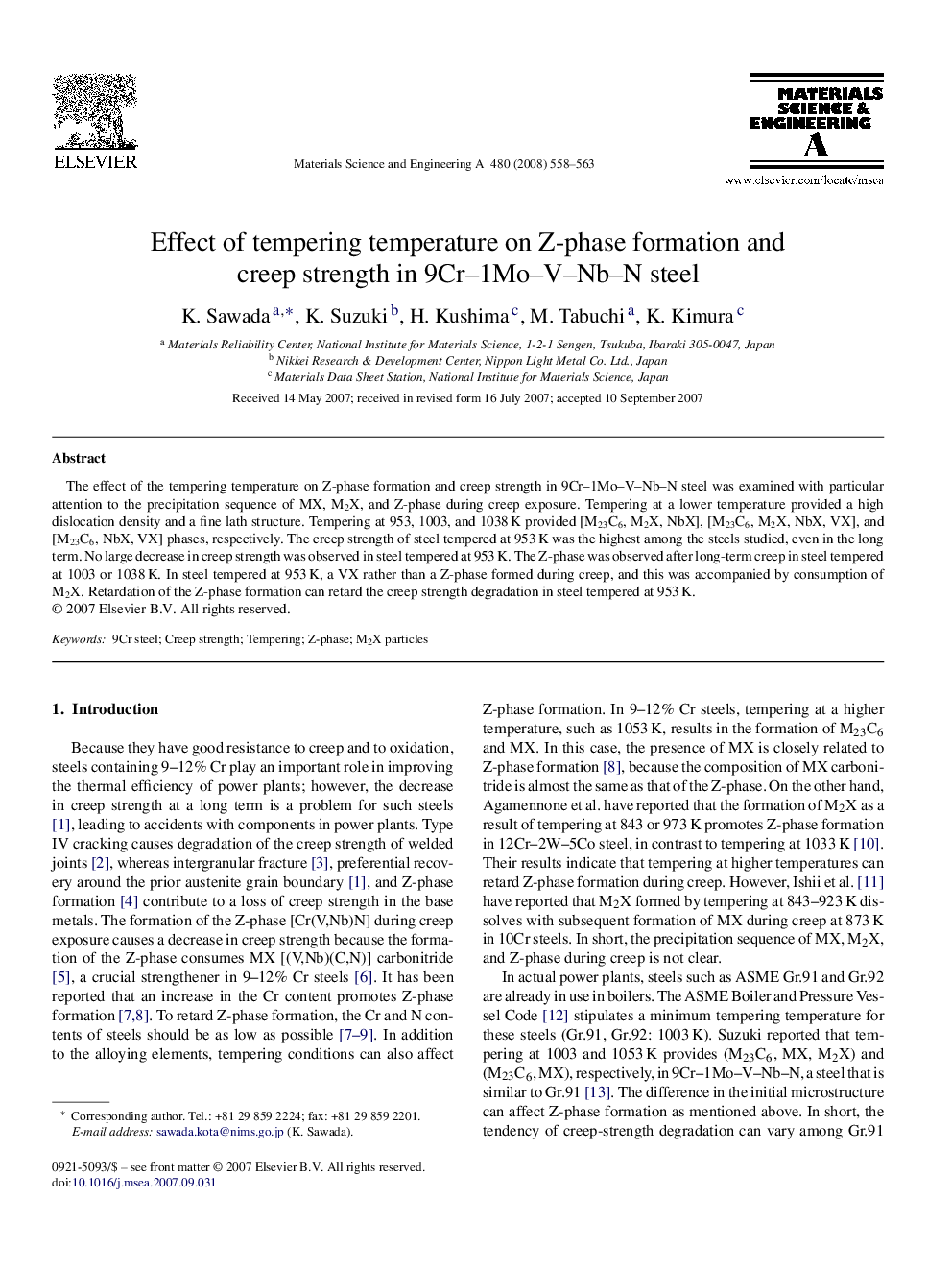| Article ID | Journal | Published Year | Pages | File Type |
|---|---|---|---|---|
| 1582691 | Materials Science and Engineering: A | 2008 | 6 Pages |
The effect of the tempering temperature on Z-phase formation and creep strength in 9Cr–1Mo–V–Nb–N steel was examined with particular attention to the precipitation sequence of MX, M2X, and Z-phase during creep exposure. Tempering at a lower temperature provided a high dislocation density and a fine lath structure. Tempering at 953, 1003, and 1038 K provided [M23C6, M2X, NbX], [M23C6, M2X, NbX, VX], and [M23C6, NbX, VX] phases, respectively. The creep strength of steel tempered at 953 K was the highest among the steels studied, even in the long term. No large decrease in creep strength was observed in steel tempered at 953 K. The Z-phase was observed after long-term creep in steel tempered at 1003 or 1038 K. In steel tempered at 953 K, a VX rather than a Z-phase formed during creep, and this was accompanied by consumption of M2X. Retardation of the Z-phase formation can retard the creep strength degradation in steel tempered at 953 K.
